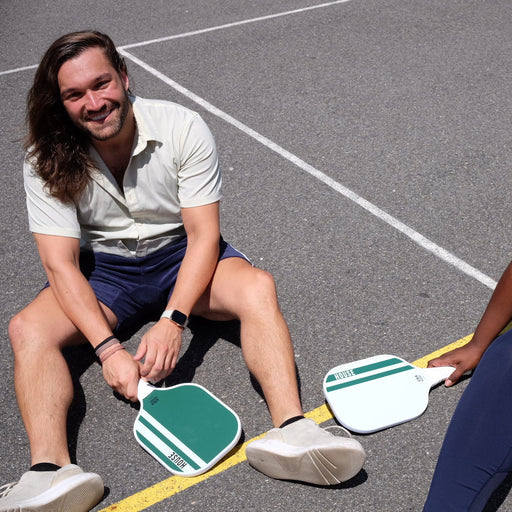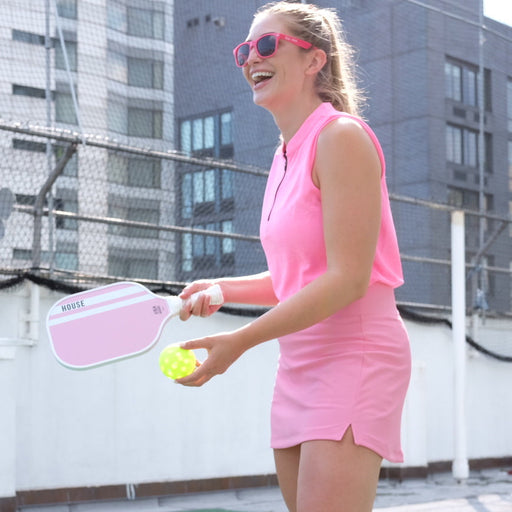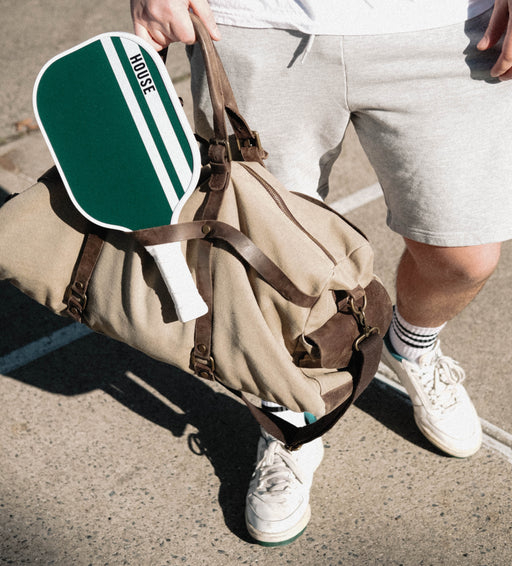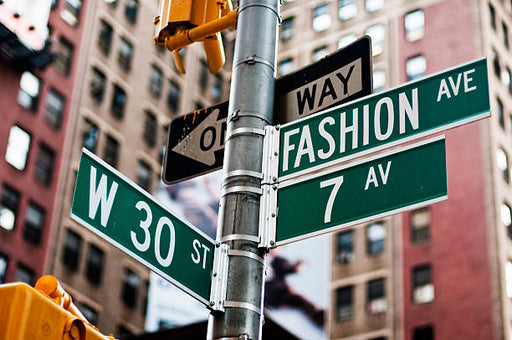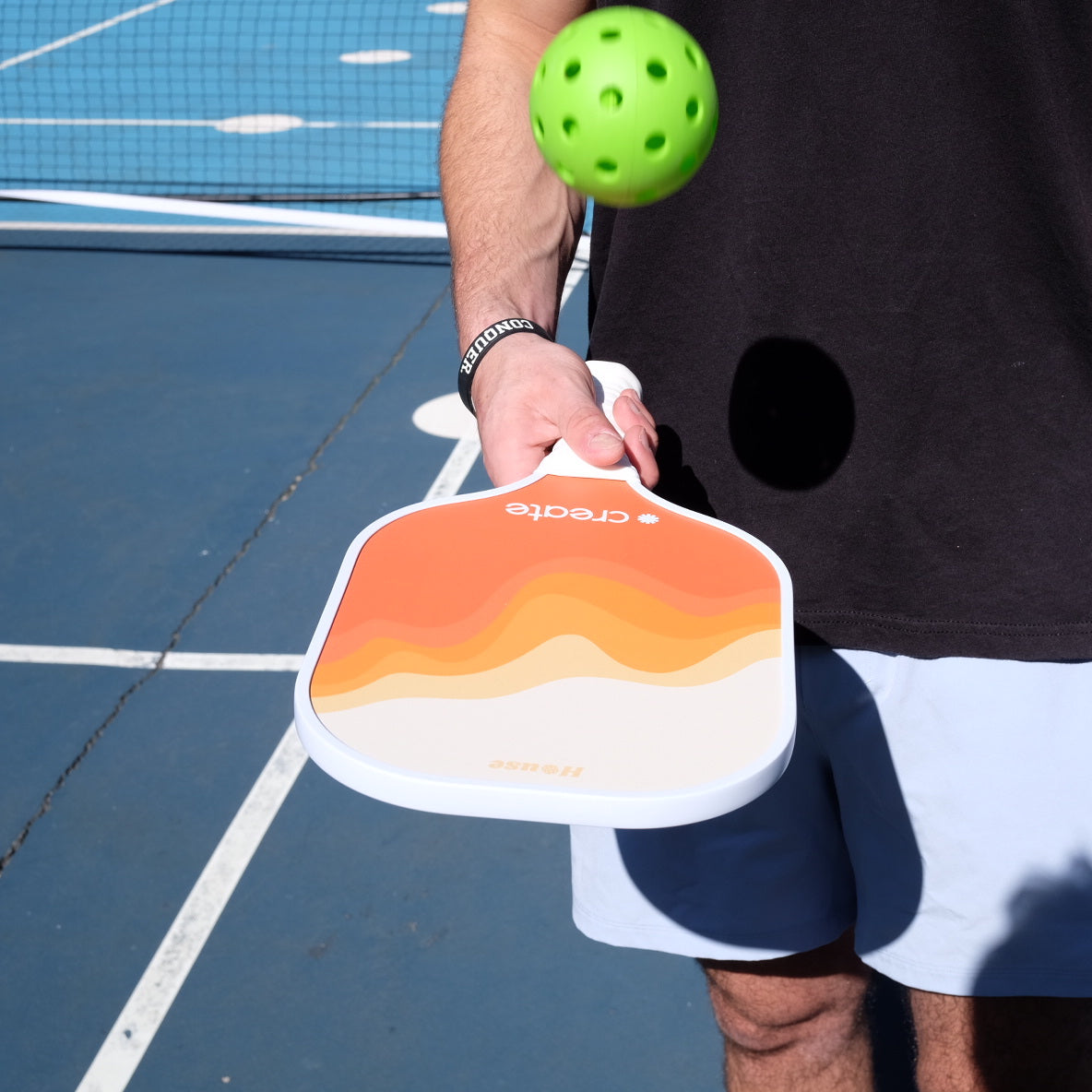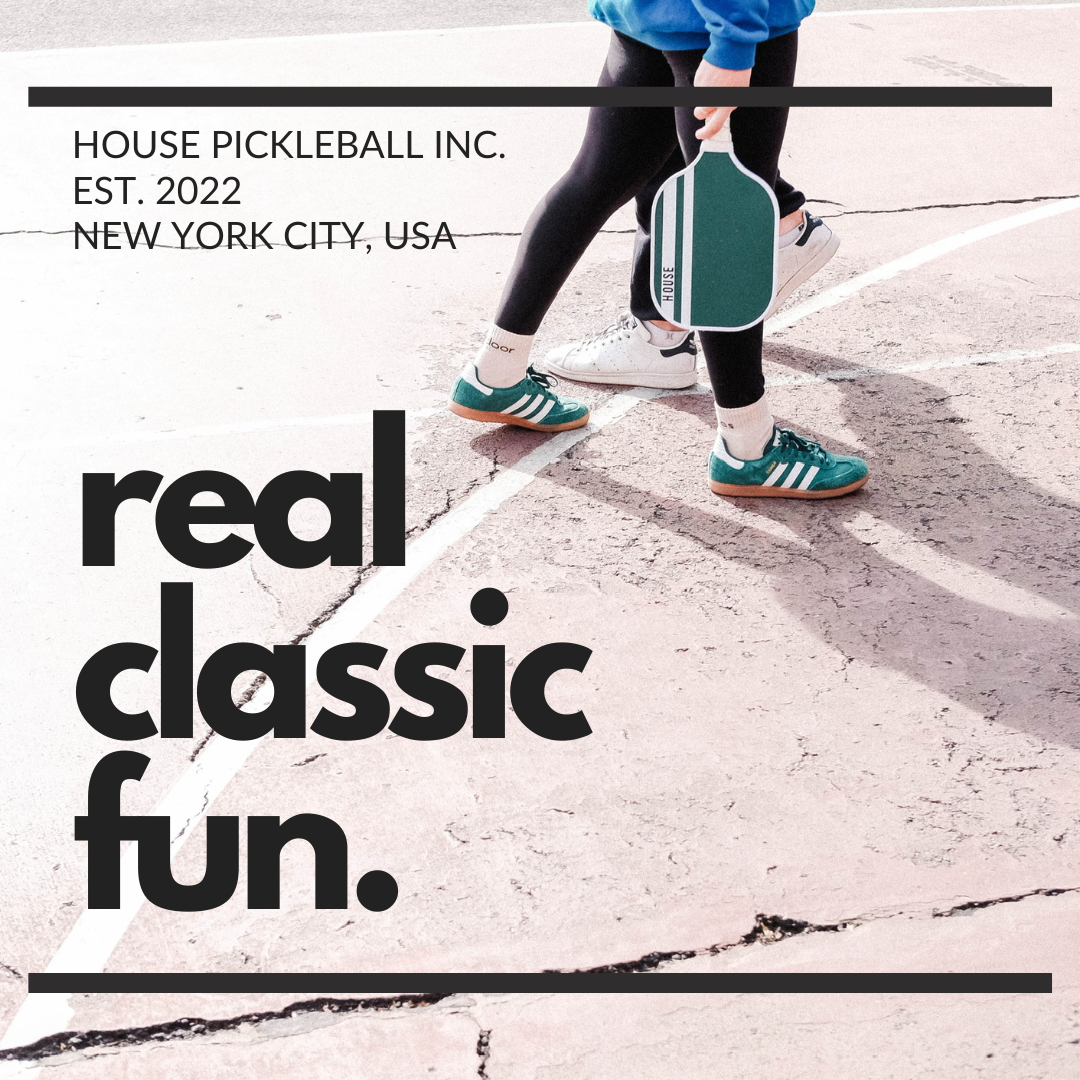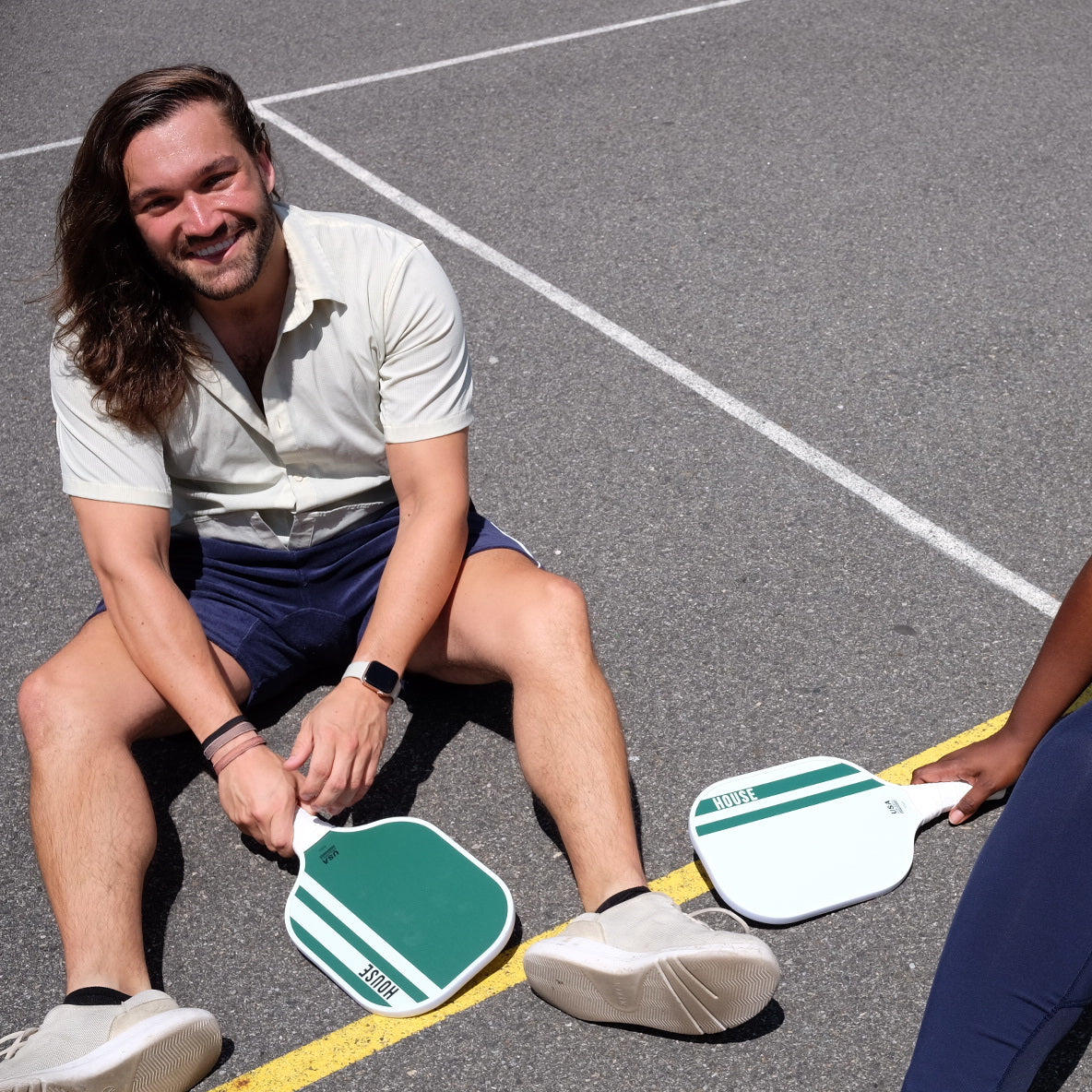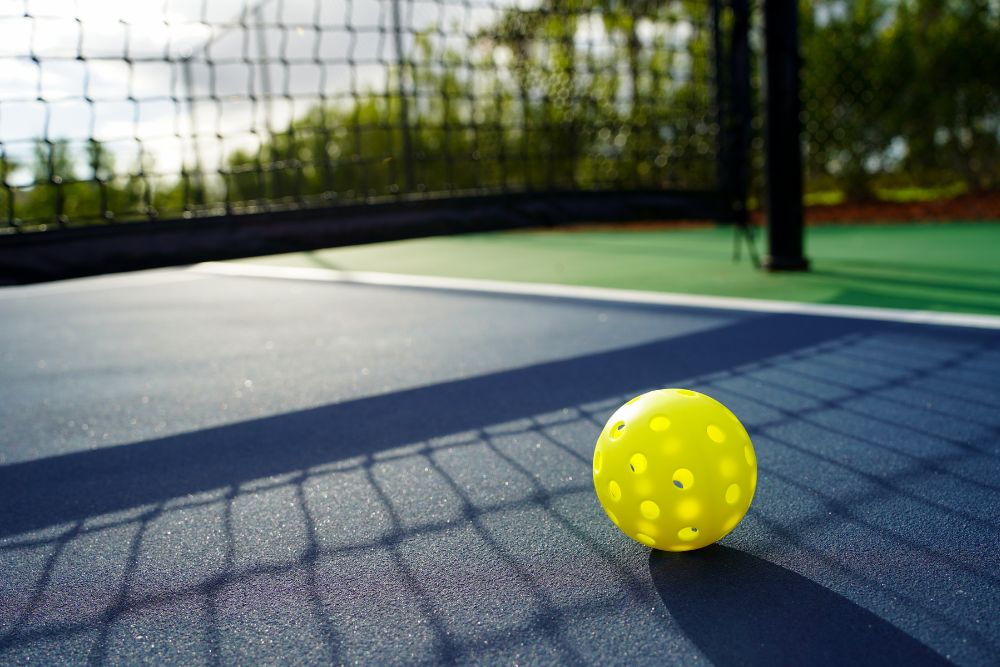
17 Basics Of Pickleball All Beginners Should Know
Ready to play some pickleball?
Before you grab a paddle for the first time, there are some basics of pickleball you should know about.
Playing pickleball isn’t too challenging. In the end, this sport became popular due to its relaxing nature. But don’t let this fool you - this doesn’t mean the sport isn’t competitive or that you won’t break a sweat.
Most notably, pickleball has some rules that might confuse beginners - especially if you’ve played similar yet different sports such as tennis or badminton.
If you’ve just started your pickleball journey, this article is for you!
Here are 17 basics of pickleball that all beginners absolutely should know:
Before You Start Playing
You cannot play a game without knowing some fundamentals and how to choose the right equipment.
Before you can even go to the court for the first time, here is some information that is necessary to know:
1. Pickleball Is Played On A Badminton-Size Court
First and foremost, you should know that pickleball is played on a much smaller court than tennis. In fact, its court has a size of 20 x 44 feet. Yes, this is the same size as a badminton court.
As for the net, it is 36 inches tall on the edges, but it reaches just 34 inches in height in the middle part.
You might wonder whether you can play pickleball on a tennis court, considering the significant size difference.
The good news is that you can - but you’ll need to make some adjustments. If you’re just starting out, I would advise you to find a good court in your area.
As the sport is rising in popularity, I don’t think you’ll have too many problems with this. For example, there are 29 great courts in New York City alone!
2. It Is Played With A Paddle
Next, unlike tennis and badminton, you play pickleball with a paddle. This makes it somewhat similar to another popular sport, ping pong.
There are several criteria that can help you choose a pickleball paddle that will suit you the best.
However, as you are a beginner, I wouldn’t worry too much about this. Just pick a paddle you can afford. Any product will serve you well (pun intended!) for the first couple of games.
3. You Should Choose A Proper Pickleball
More important than choosing a good paddle is choosing the right pickleball.
There are different pickleballs for outdoor and indoor courts - and yes, you should always opt for the one intended for the court you plan to play on.
This is especially important if you’re just starting out. Experienced players might be able to utilize the features of each ball to their advantage. Beginners, however, will probably find this too challenging.
4. There Are Singles And Doubles

Just like tennis, pickleball can be played as singles or doubles. Unlike tennis, the court size is the same for both types of games, so you’ll have one less thing to worry about.
While some individuals prefer singles, most seem to prefer playing in doubles. Considering how this is a fun sport most people love to play with friends, it’s easy to see why.
Serving
Now that you’ve learned some starters, it’s time to get to serving!
Serving in pickleball might be even more important than serving in other racquet/paddle sports. Here are some things you need to learn:
5. All Points Begin With A Serve
This one is pretty straightforward, and it’s really the same as with tennis. All points begin with a serve.
This is why some people like to say that serve is the most important move of the entire game. Honestly, I can fully agree. A good serve can change the course of the game entirely - for better or for worse
6. You Choose The First Server By Random
There are no particular rules to how you choose the first server. However, the usual method is by random - by flipping a coin, playing rock/paper/scissors, or some other tactic.
You can also make an agreement on who will serve first. This is entirely up to you.
There is no true proof that the order in which players will serve will impact the game in any way.
Instead of thinking too much about this, try to have some fun! Maybe even have a small competition before the real game.
7. All Serves Are Underhand
Unlike in tennis, all serves in pickleball must be underhand, with the contact occurring below the waist and your hand moving upwards.
Most players, including myself, will hit the ball out of the air. It is allowed to bounce the ball off the ground and then hit it, as well.
In tennis, the goal is to serve aggressively and even try to score an immediate point. When it comes to pickleball, the serve should simply put the ball in the game.
Feel free to be more gentle and to play a smart move, instead of going all in and hitting the ball with all your might.
8. The Server Serves Behind The Baseline

The baseline is the line that runs the entire width of the court, parallel to the net. It is the outer edge of the court.
When serving, you need to stay behind the baseline. In other words, both of your feet should stay outside of the court lines.
Not just that, but at the moment of the serve, at least one of your legs should be on the ground.
Also, you shouldn’t go beyond the centerline. Stick to the side of the court you’re in, while moving as close to the middle as possible as this is more likely to give you a good shot.
While this might sound easy, most beginners will mess this step up. It’s easy to move improperly when you’re focusing on the ball and the serve.
Don’t worry. While no one loves losing a point, there is some comfort in knowing that all experienced players have struggled with their foot placement at the beginning.
9. The Side The Serve Is Taken From Depends On The Score
One rule that is a bit more unique is that the side from which a player will serve depends on points.
If a player has an even number of points (0, 2, 4, 6, 8, 10, etc.), they’ll serve from the right side of the court.
On the other hand, if a player has an odd number of points (1, 3, 5, 7, 9, etc.), the serve will be taken from the left.
Of course, this only goes for the singles. The doubles have their own rules that are slightly different.
10. Both Players Serve In Doubles
The rules in doubles are almost entirely the same as rules in singles, except now you have two players instead of one. This also means that both players will serve in doubles.
The first player will serve until they commit a fault. Then, the serve will pass onto the second player.
Players switch sides between each serve when they win the point. If the serving team loses the point,
The only exception is the first score. To make the game fair, only one player can serve during the first point.
This is where the three-number method comes in handy. What does this mean?
Let’s imagine your scoring is 4-3. If you’re the one starting the serve, you should announce “4-3-1”. This way, everyone will know that you’re the first player who serves.
Once you lose the point, your partner should announce “4-3-2” to let everyone know they are the second in line.
If the point is lost once again, the ball goes to the opponents, and now it's their time to announce “4-3-1”.
The only exception is during the first serve, as this is when you only have one serve. During this time the first player should always announce “0-0-2”.
General Rules
Now, once we’re over the serve, it’s time to go over some general rules.
Here are some basics of a pickleball game you shouldn’t miss:
11. The Ball Should Bounce Once On Each Side
One of the most important rules of pickleball is the two-bounce rule (previously known as the double-bounce rule).
After the serve, the receiving player has to allow the ball to bounce once before they can hit it. Then, the server also has to let the ball bounce once before hitting it.
Each of these two bounces has to happen on one side of the net. If the ball bounces twice on the same side, that is a fault.
Once these two bounces are done, the players can start volleying the ball or even play off the bounce.
Also, this rule only applies during the first point of the game. Throughout the rest of the game, you can play as if the two bounces were up.
You can learn more about returning a serve in this video:
12. Pickleball Should Stay In Bounds
This one is probably straightforward, but it’s important to mention it nonetheless.
The lines on the court are there to tell you where to serve, but also where the pickleball should go. The ball should always stay within the bounds of the court, and hitting it outside of it is considered an automatic fault.
In other words, if you hit the ball outside the bounds your opponent takes over the serve. This might change the entire course of the game, and not in your favor - but more on that later on.
13. You Cannot Volley In The Kitchen
The kitchen is a zone 7 feet from the net on each side. It’s also known as the non-volley zone, which speaks enough on its own. If you’re familiar with any pickleball terms, you have probably heard of this one, as well.
You cannot stand in the kitchen and hit the volley. In fact, you cannot even stand on the kitchen line, or allow the momentum to carry you into this zone after a volley.
There is, actually, a very good reason behind this.
If a player was to stand close to the net and volley, they would have a huge advantage and would likely score on every hit. The kitchen is there to null this advantage.
14. You Can Hit Groundstrokes In The Kitchen
While volleying in the kitchen isn’t allowed, one type of shot is, and that is a groundstroke.
If your opponent hits a shot that lands in the kitchen (also known as a dink), you are allowed to get into the kitchen and hit it.
This is also the only shot you can make in this zone.
15. All Points Continue Until Fault
I’ve briefly touched upon this, but it’s time to go a bit deeper.
After the serve, the players keep on hitting the ball until one of them commits a fault. This is where the server gets the point or loses a serve.
There are three types of fault in pickleball, two of which I have already mentioned:
- A pickleball was hit out of bounds.
- The serve didn’t clear the kitchen.
- The ball hit the net.
Unlike tennis, pickleball doesn’t have a let. If a ball hits the net after a serve, you don’t get a redo.
Scoring
Finally, we get to scoring, which is probably what you are most interested about.
Here’s how you can score points in this amazing sport:
16. Only The Serving Side Scores Points
The way you score in pickleball can confuse many players, especially those familiar with tennis.
Only the serving side can score points. Also, the serving player continues to serve until they lose a point by hitting a fault.
If you’re playing doubles, after winning a point the players should switch sides. Then, the serving continues according to the points, as I’ve mentioned beforehand.
Once you lose a point, the serve goes to the opponent.
17. First Team That Scores 11 Points By Two Wins
Finally, the winner is the first team that scores 11 points - as long as they have two points more than their opponent.
In other words, if the score is 10 - 10, the next team that scores a point won’t win. Instead, they’ll keep on playing until the difference is at least two.
As a result, a game of pickleball can end up lasting for a very long time. Sometimes the final score will be higher than 20 or even 30!
Final Words
Pickleball might seem like a confusing game at first. However, once you get to know the basics, you’ll see that it isn’t as challenging as you might think. In fact, its simplicity is what makes the game so much fun!
Whether you want to play this sport professionally one day or if you just plan on playing it as a hobby, it’s important to learn some basics of pickleball so you can enjoy it the right way with your friends or just other people who share your love for the game.
I hope I have made things clearer for you, and that you are ready to have a great match!





